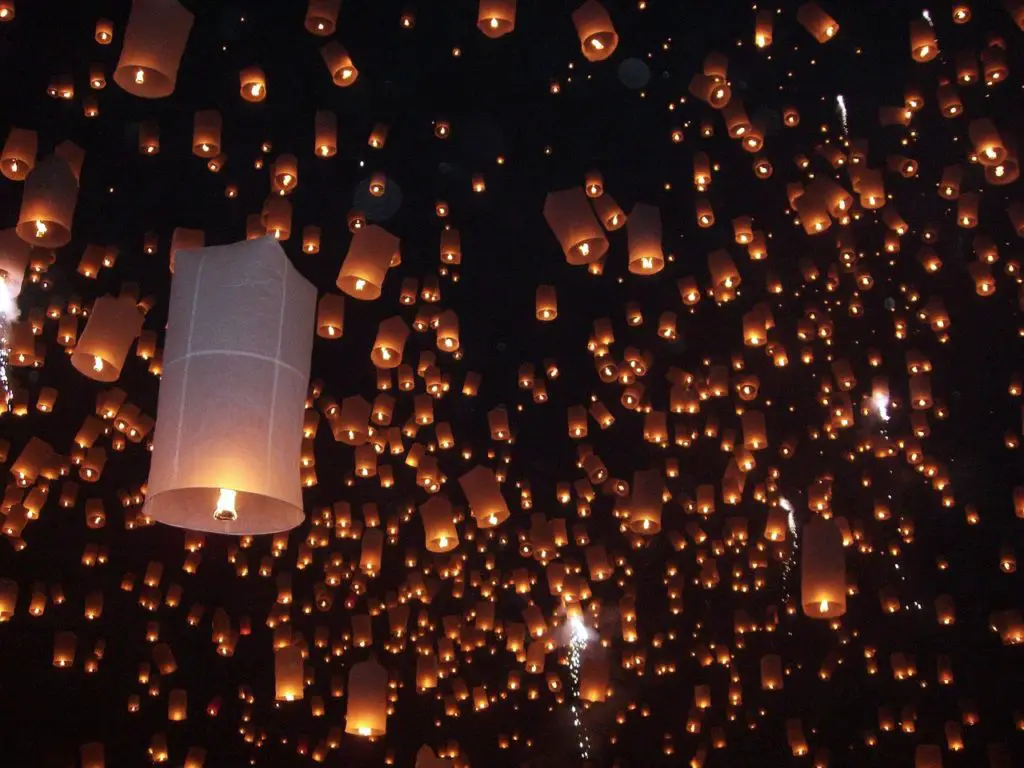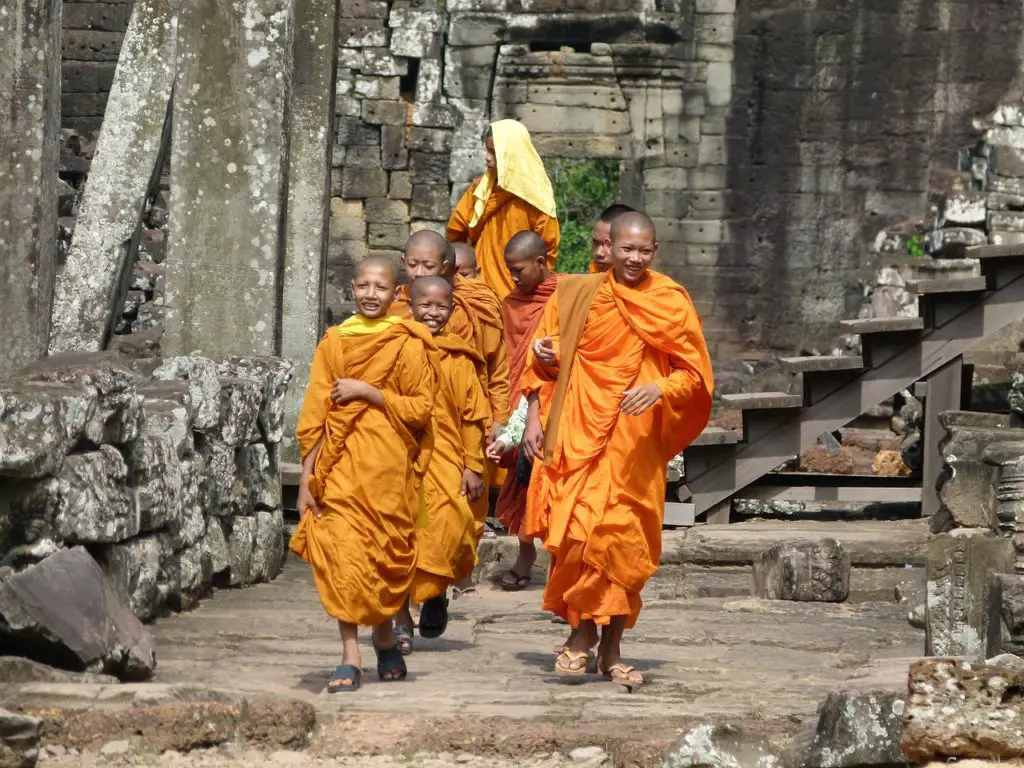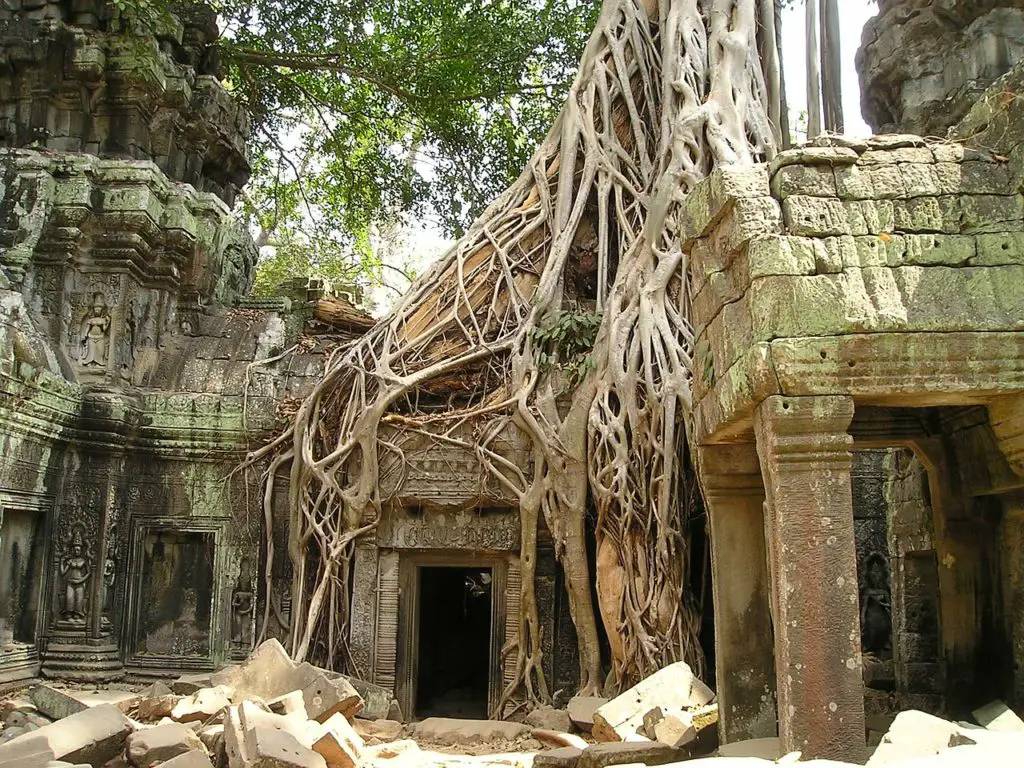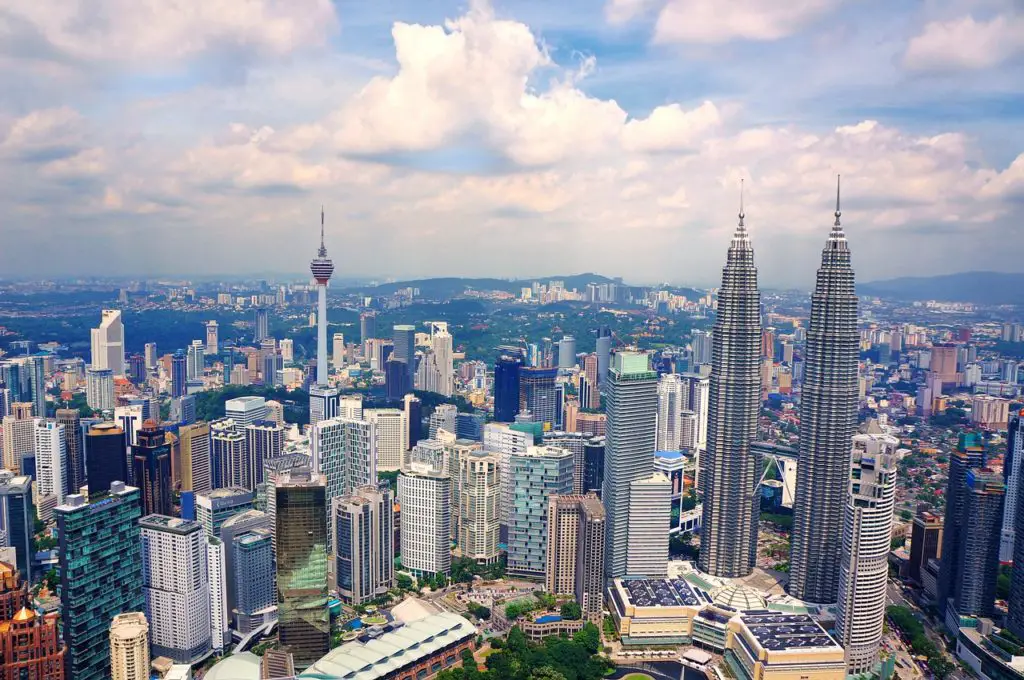It is hard to imagine that this sleepy laid-back town was once the capital city of the Lan Na Kingdom. Our helpful guide to Chiang Mai itinerary 4 days takes you on a journey across the old city, playing with rehabilitated elephants, and visiting the city’s famous temple, Wat Phrathat Doi Suthep.
Chiang Mai in Thai means “New City” which was founded in 1296 and succeeded its former capital of Chiang Rai. The highlights of our itinerary are:
- Wat Chedi Luang
- Wat Chiang Man
- Elephant Nature Park
- Wat Phra That Doi Suthep
- Bhubing Palace
In this post, we take you through whether Chiang Mai is walkable, is expensive to visit, the best time to visit, and is Chiang Mai worth visiting. You have landed on the right page if you are looking for answers to these questions on Chiang Mai.
- Where is Chiang Mai?
- Are 4 days in Chiang Mai enough?
- Is Chiang Mai walkable?
- How expensive is Chiang Mai?
- What is the best time to visit Chiang Mai?
- What part of Chiang Mai should I stay in?
- Do they speak English in Chiang Mai?
- Is Chiang Mai worth visiting?
Disclaimer: Some of the links on here are affiliate links and I may earn if you click on them, AT NO EXTRA COST to you. Please read my Disclaimer Policy for more information. Hope you find the information here useful! Thanks.
Where is Chiang Mai?
Chiang Mai is the largest city in Northern Thailand and is the capital city of Chiang Mai Province. A unique feature of Chiang Mai is that it sits among misty mountains that are home to the hill tribes.
There are 117 Buddhist temples with several active temples, some in ruins while others are covered in vegetation. The major festivals that are celebrated here are the Loy Krathong, Songkran, Chiang Mai Flower Festival, and Intakhin (City Pillar) Festival.
Loy Krathong
This festival is celebrated throughout Thailand and is known by several names across the world. In Myanmar, it is Tazaungdaing and in Sri Lanka, it is II Full Moon Poya, and in Cambodia, it is Bon Om Touk.
The term “Loy” in Thai means “to float” while a “Krathong” is a traditional offering of food and desserts that is made with leaves and flowers. This festival traces its origins to India where Thais use a Krathong to send thanks to the Goddess of Water, the Goddess Ganga in Hinduism.
In Chiang Mai, this festival coincides with Yi Peng which means “full moon day on the second month” of the Lanna calendar. Sky lanterns are lit to prevent troubles and mishaps and are used to decorate homes. Read A Guide To Chiang Mai’s Yee Peng Lantern Festival to know more.
History
According to an ancient chronicle, it was the alliance of three kings, Phaya Meng Rai of Chiang Mai, Khun Ramkhamhaeng of Sukhothai, and Phaya Ngam Meuang of Phayao who forged the Kingdom of Lanna in 1296 with Chiang Mai as its capital city.
The statue marking this event is the Three Kings Statue at the Old City where people leave bouquets, incense, and candles in honor of the men who brought this city to life. The ancient city is Wiang Kum Kam which was built by King Mengrai.
When the Lanna Kingdom declined, Chiang Mai became part of the Thonburi Kingdom and Chiang Mai was soon abandoned. Due to its status as being the northern capital city of Thailand, Chiang Mai soo grew to become a cultural, economical, and trading hub.
Fun Facts
The symbol of Lanna culture which still exists today is that of the Kalae which are the wing-like wooden panels carved with birds, clouds, and flowers. These sculptures are on gables of homes, hotels, and shopping complexes in Chiang Mai.
Visa Requirements
Thailand requires visitors to obtain a visa before arrival from the Thai Diplomatic Missions in their country. Holders of passports from 64 nations can enter Thailand visa-free. The map below shows the visa requirements for each country.

To simplify visa procedures, Thailand introduced the Electronic Visa Application that can be completed in six steps. You would need to create an account to start the application procedure. The e-visa official website has more information.
Are 4 days in Chiang Mai enough?
To explore Chiang Mai alone, four days is sufficient. In our Chiang Mai Itinerary 4 days, we explore the Old City temples, the ethical Elephant Nature Park, the city’s famous temple, and end our itinerary with a visit to Bhubing Palace and some shopping.
Day 1: Old City Temples
The first day of our Chiang Mai itinerary 4 days begins with a visit to the three main temples that are historically significant in Chiang Mai. Other than these temples, the old walls of this fortified city are intact.
The Tha Pae Gate marks the eastern side of the Old City is now a geographical boundary between the Old City and New City. On Sundays, there is the Sunday Walking Market between Tha Pae Gate to Wat Phra Singh filled with homemade local food, hill-tribe crafts, and is a perfect place to pick up souvenirs.
Another monument is the Three Kings Statue marks the event where three rulers founded and built Chiang Mai. This statue is in front of the Chiang Mai Art & Cultural Center.
The ancient city of Wiang Kum Kam is a historic settlement built by King Mengrai along the Ping River. The city was abandoned more than 700 years ago due to frequent floods.
The main temple here is Wat Chedi Liam or “Temple of the Square Pagodas” which remains a working temple with resident monks.
Wat Chedi Luang
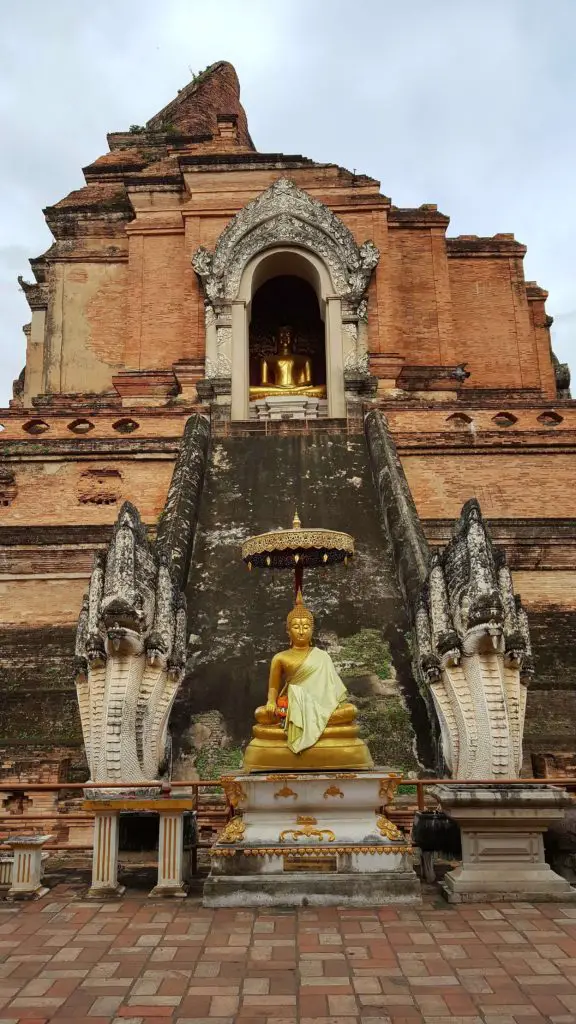
The first in our Chiang Mai itinerary 4 days is Wat Chedi Luang. The literal translation of Wat Chedi Luang is the temple of the royal stupa. There were originally three temples within the temple complex. The other two temples were Wat Sukmin and Wat Ho Tham.
As you walk into the temple, look out for a dipterocarp tree that stands at the left from the entrance. Local legend has it that if this tree falls, a catastrophe would befall the city. A shrine next to the tree holds the Sao Intakhin which is the “spirit of the city”.
Around the grounds, you would also find Phra Chao Attarot where you would a beautiful standing Buddha. Another smaller temple is the Wat Phan Tao which is a beautifully carved teak temple.
The main structure here is the ruined brick structure of Wat Chedi Luang that rises about 60 meters in height. All four sides are flanked by staircases that are guarded by Nagas. At the niches, there are stone Buddha images. On the eastern side niche, you can find the replica of the Emerald Buddha that was kept here.
When was Wat Chedi Luang built?
King Saen Muang Ma began construction of the temple in 1391 as a temple to hold the ashes of his father, King Kun Na. The temple was completed in 1475 and was home to the Emerald Buddha. In 1545, an earthquake damaged the temple, and the Emerald Buddha was moved to Luang Prabang.
What does Chedi mean?
In Thailand, Chedi means Buddhist stupa. Chedi’s are different from stupas in that they have a bell-shaped base topped with a spire.
How much is the entrance fee to enter Wat Chedi Luang?
While entry to Wat Chedi Luang used to be free for everyone, the entrance fee is now ฿40 ($1.22) for adults and ฿20 ($0.61¢) for children. This rate only applies to foreigners. The temple is open daily from 8.00 am to 5.00 pm.
Wat Phra Singh
The second in our Chiang Mai itinerary 4 days is Wat Phra Singh. This temple is an easy 10-minute walk from Wat Chedi Luang. The full name of the temple is Wat Phra Buddha Sihing and according to legends, the statue was based on the lions of Shakya.
The construction of this temple began in 1345 when the fifth King of the Mengrai Dynasty built this chedi to store the ashes of his father. Three funerary urns were found during the restoration works in 1925 inside a small chedi.
The main attraction of this temple complex is Wihan Lai Kham is an example of Lanna architecture. The murals on this temple are remarkable and depict the lives of the locals and popular folklore tales.
Another structure worth visiting is the Ho Trai which is the temple library that is set on a stone base with guards flanking the stairs and lions emerging from the mouth of the Makara, a mythical water creature.
How much is the entrance fee to Wat Phra Singh?
The entrance fee is ฿40 ($1.22) for foreign adults. The opening hours are from 6.00 am to 6.00 pm.
Wat Chiang Man
The third in our Chiang Mai itinerary 4 days Wat Chiang Man. This temple is a 5-minute drive or 15-minute walk from Wat Phra Singh. This temple is the oldest in Chiang Mai and was built by King Mengrai in 1297 as the first temple of the fortified city of Chiang Mai.
There are several sights within this temple complex that are worth exploring. The first is Wat Chedi Chang Lom which is known as the “Elephant Chedi”. This is the oldest structure where a square base supports 15 brick and stucco elephants that seem to carry the upper levels on its back.
The Main Wihan has a statue of Buddha with an engraving of the year 1465, making it the oldest statue of Buddha from the Lanna Kingdom. However, the two smaller wihans are of equal importance.
The smaller wihans are home to two important statues of Buddha that are believed to have protective powers over the city of Chiang Mai. The statues are Phra Sae Tang Khamani or the ‘Crystal Buddha’ and Phra Sila which is a stone bas-relief of Buddha taming the elephant Nalagiri.
Is there an entrance fee to enter Wat Chiang Man?
The entry to Wat Chiang Man is FREE and its opening hours are from 6.00 am to 5.00 pm.
Day 2: Elephant Nature Park
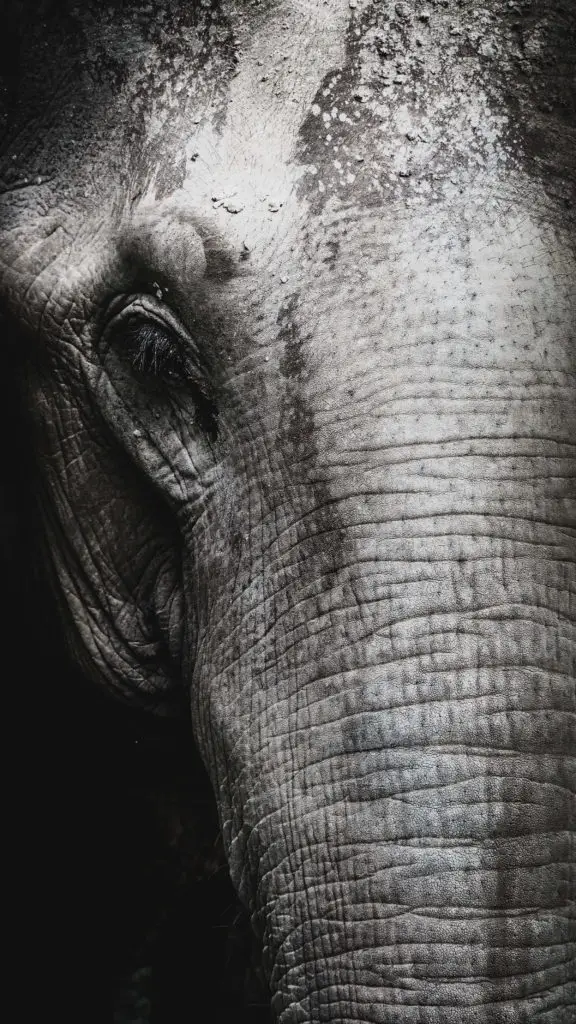
The second day of our Chiang Mai itinerary 4 days begins with a visit to the Elephant Nature Park. This sanctuary and rescue center for elephants was founded by Lek Chailert who began working on elephant conservation since 1996.
The park is about 37 miles from Chiang Mai and has a duty of care to protect those under their umbrella. The duty of care is not only towards its elephants, it is also towards its staff and guests. The other rescued animals in their care are buffaloes, dogs, and cats.
Fun Facts About Elephants
- There are three known species of elephants. These are the African Savannah Elephant, the African Forest Elephant, and the Asian Elephant.
- World’s largest land animal. The male African elephants can weigh between 4,000 to 7,000 kilograms and are about 3 meters in height. The male Asian elephant is smaller at 2.7 meters in height and weighs between 2,000 to 3,000 kilograms.
- Cave elephants. In Mount Elgon National Park in Kenya, there are a group of elephants that go deep into Kitum Cave to mine salt. These are the only elephants in the world that have this unique behavior.
- The ears tell the difference between the species. African elephants have wide ears that are similar to the African continent while their Asian cousins have ears that look like India.
- Communication. Elephants communicate via seismic signals, trumpet calls, body language, touch, and scent.
The fourth in our Chiang Mai itinerary 4 days is at Elephant Nature Park. This elephant sanctuary is one of the most ethical and best-known in Thailand. The unique feature of this park is that it is a chain-free sanctuary for elephants.
Each of the elephants here come from abused backgrounds and were formerly circus performers, used for trekking and logging activities, and street performers. By the time they arrive here, these elephants have declining physical and mental health, are in broken spirit, and have other age-old complications.
The sanctuary provides these elephants with a chance to relax and rehabilitate. The elephants here have freedom of movement. To enrich the lives of these majestic creatures, the park has stopped the bathing of elephants.
The park has a “Hands Off” and “Saddle Off” policy in place to minimize human interaction with the elephants. You can touch the elephants during feeding times.
How many elephants are at Elephant Nature Park?
As of 2016, Elephant Nature Park had rescued about 200 elephants. According to the International Union of Conservation of Nature’s Red List, the Asian elephant is an Endangered Species with about 3,341 left in Thailand and 51,680 in the wild.
How much is the entrance fee to Elephant Nature Park?
There are several packages to choose from at Elephant Nature Park. The Elephant SkyWalk package is ฿3,500 ($106) for adults while the Short Park Visit is ฿2,500 ($76.31) for adults.
For the adventurous, you can experience an Overnight 2 Days 1 Night Visit for ฿5,800 ($177) for adults. Check out Elephant Nature Park’s Visit and Volunteer page to know more. Children get a 50% discount across all rates. Do note that there are some visits where children are not allowed.
Day 3: The City’s Famous Temple
The third day of our Chiang Mai itinerary 4 days begins with a visit to Chiang Mai’s famous temple, the Wat Phra That Doi Suthep. The term Doi Suthep refers to the name of the mountain that the temple sits on.
Wat Phra That Doi Suthep
The fifth in our Chiang Mai itinerary 4 days Wat Phra That Doi Suthep. This temple has beautiful views of Chiang Mai. As this is an active temple, visitors are expected to be decently dressed. Footwear would have to be removed before entering the temple.
Legends of Wat Phra That Doi Suthep
There are several legends associated with this temple. The first is that a 14th-century monk from the Sukhothai Kingdom had a vision. In his vision, he saw a fire and saw a bone glowing and believed it to have magical powers.
When the monk took the bone to the King of Sukhothai, the bone did not show any abnormality and the king told the monk to keep it.
However, King Nu Naone of Lan Na Kingdom heard about this relic and invited the monk to his kingdom. When he arrived, the relic had broken into two pieces. One part of the relic was placed at Wat Suan Dok.
The other piece was placed at the back of a white elephant which was released into the jungle. The elephant walked up Doi Suthep, trumpeted three times, and dropped dead. King Nu Naone took this as a good omen and began building the current temple in 1383.
How long does it take to visit Doi Suthep?
It would be best to allocate at least 5-6 hours to visit the temple. This is because you may take at least an hour to get to the base of the temple from Chiang Mai.
How do I get to Wat Phra That Doi Suthep?
The temple is within the Doi Suthep-Pui National Park. There are three ways to get to Wat Phra Doi Suthep. These are:
Road
If you are driving, take Route 1004 or Huay Kaew Road towards Chiang Mai Zoo and Doi Suthep-Pui National Park. The route has many curves and will take you to the base of the temple. The temple is approximately 9 miles from Chiang Mai city.
Songtaews
Another option to get to the temple is via the red songtaews. Songtaews are pickup trucks that have been converted to passenger vehicles and usually consist of two rows or levels. The drivers usually wait until the truck is full before leaving for its destination.
Songtaews leave from Huay Kaew Road and should cost about ฿300 ($9.15) per person one way or ฿500 ($15.25) if you want the driver to wait for you and bring you back to the city.
Hiking
The last option is for the adventurous as you can hike up to the temple. To get to the trailhead, you need to get to Suthep Road. From there, past Chiang Mai University until you see some green areas. There is a signboard that says “Nature Hike”.
At the sign, turn right onto a narrow road, walk straight for about 100 meters and then follow the left turn curve of the road that would lead you to the trailhead. This hike is known as the Doi Suthep Monk Trail and is a 6.3 kilometer moderate and heavily trafficked hike.
How much does it cost to visit Doi Suthep?
There is no entrance fee to visit the Doi Suthep temple or any other temple within the Doi Suthep-Pui National Park.
Day 4: Bhubing Palace & Shopping
The fourth day of our Chiang Mai itinerary 4 days begins with a visit to Bhubing Palace and we end the day with shopping at some major bazaars, night markets, and shopping complexes across the city.
Bhubing Palace
The sixth on our Chiang Mai itinerary 4 days is Bhubing Palace. The Bhubing Rajanives Palace was built in 1961 as a royal winter palace and a royal guesthouse for prominent state visitors from abroad.
The palace was built based on ruean mu (“group of houses”) which is a central Thai architectural style where groups of houses are built on stilts. The palace took 5 months to build and its first foreign dignitaries were King Fredrick IX and Queen Ingrid of Denmark in 1962.
How much is the entrance fee to Bhubing Palace?
The admission fee for foreigners is ฿50 ($1.50) and is open daily from 8.30 am to 4.30 pm. The palace is closed in the first quarter from January to March when it is used as a royal residence.
Shopping
The seventh and last in our Chiang Mai itinerary 4 days is shopping in and around Chiang Mai. While Chiang Mai is known as the capital for arts and crafts in Thailand, it is its walking streets that draw the crowd.
The Saturday Walking Street is along Th Wualai and begins at 4 pm when the road closes and becomes a pedestrian street. If you are looking for hill-tribe trinkets, paper lanterns, umbrellas, and silver jewelry, then this is the place to be.
I’ve missed Saturday Walking Street, what else can do I do?
Fret not! There is the Sunday Walking Street that opens from 4 pm onwards. It starts at Tha Pae Gate and covers the full length of Th Ratchadamnoen. If you arrive early, you may see some vendors perform prayers after the first sale of the night.
This is with the hope that more sales would follow through. Sunday Walking Street is known for its silk, paper lanterns, ceramic, and wooden items.
What should I buy in Chiang Mai?
Make sure to bring an empty travel duffel bag as you would need it. Some of the things you can buy are:
- Decorative Thai silk placemats. This traditional green-gold woven silk fabric is suitable for dining tables, coffee tables, and entryway tables and makes a perfect housewarming gift. It is foldable, washable, and simply adds elegance to your table.
- Thai herbal rice soap. This 3-piece soap set comes with collagen that helps moisturize your skin. Its scent isn’t overpowering and the soap lathers quickly also help lighten dark spots over time.
- Decorative Thai wood panel sculpture. Chiang Mai is famous for its wood carvings, all beautifully handmade. These carvings are made of Teakwood and are a beautiful addition to any part of your home.
Is Chiang Mai walkable?
Our Chiang Mai itinerary 4 days considers the fact that the Old City of Chiang Mai is walkable. To begin our walking tour, we start at the Three Kings Monument on Ratvithi Road.
From there, you can walk across to the Lanna Folklife Museum which is towards the left, and the Chiang Mai City Arts and Cultural Center which is located on its right. After that, take a 4-minute walk to Wat Inthakin Sadue Muang.
The Wat Inthakhin Sadue Muang is described as “the temple of the city navel” as it lies at the heart of the Old City. After Wat Inthakin, take a 10-minute walk to Wat Chiang Man.
From Wat Chiang Man, take an 11-minute walk to Wat Dab Pai and pray for your good health. Local legend mention that a very sick monk came to this temple and prayed for recovery. He recovered immediately and constructed the present temple as gratitude.
After that, take a 6-minute walk to Wat Phra Singh, the oldest royal temple in Chiang Mai. Then, make your way to Wat Tung Yu which is an easy 2-minute walk. Wat Tung Yu is more than 500 years old and is a temple named after the ceremonial umbrella for royalty with the rank of a prince.
After that, take a 7-minute walk to Wat Chedi Luang with its spectacular chedi was once the highest in the region for almost 500 years. Finally, end your walking tour at Tha Phae Gate, the once city wall that protected this ancient city.
For your convenience, our free walking tour is shown on the map below.
How expensive is Chiang Mai?
According to Budget Your Trip, the average daily cost per person per day is ฿1,307 ($40) which is ฿9,146 ($279) per week, and ฿18,292 ($558) for two weeks. A typical double-occupancy room would cost ฿1,515 ($46).
The average cost of food is ฿299 ($9.12) with breakfast being the cheapest meal. The prices at dine-in restaurants cost more than street food and fast food prices. Transportation per person is approximately ฿106 ($3.23) on local transportation.
Although tipping is not customary or mandatory in Thailand, an average visitor spends about ฿58 ($1.77) on tips and handouts. The usual tipping amount is 5% of the total bill.
Whether Chiang Mai is expensive or not would depend entirely on you. You can visit Chiang Mai on a budget by choosing cheaper hotels and eating at local restaurants, with an occasional meal at a fine-dining restaurant.
What is the best time to visit Chiang Mai?
There are three main seasons in Chiang Mai. These are the rainy season, the hot and humid season, and the cool and dry season.
The rainy season is from June to October with rains peaking during August and September. During this season, waterfalls and river-based activities could be closed. The two events in this season are the Bun Bang Fai Rocket Festival and the Khao Phansa, a Buddhist equivalent to Lent.
The cool and dry season begins from November till February which also coincides with the peak tourist season. The second half of November is the absolute peak as Loy Krathong takes place. You can expect increased prices and traffic at this time.
Finally, the hot and humid season begins from March till May which coincides with the “burning season” where thick haze covers the city. The two festivals to look out for are Songkran and the Inthakhin Festival where the locals pay respects to the City Pillar.
Travel Tips
To experience the best of weather and crowd, then book your holidays to Chiang Mai during the shoulder seasons of May to June which is the end of the hot season, and September to October which is the end of the rainy season.
What is the hottest month in Chiang Mai?
The hottest month in Chiang Mai is in April where the average maximum temperature is 36°C (96°F). During this month, the roads become dusty and the air is dry as it hasn’t rained in a few months.
What is the coldest month in Chiang Mai?
The coldest month in Chiang Mai is in January which has an average maximum temperature of 28°C (82°F). During this month, you can walk around in shorts. However, bring a sweater or jacket as it temperatures drop in the evening.
What part of Chiang Mai should I stay in?
It is always a difficult task to narrow down the best places to stay as we always strive for that one “perfect” hotel or area. In this section, we give you the best options and the best hotels to stay when in Chiang Mai.
Old City
The Old City is an attraction by itself in Chiang Mai. It is a square area within semi-ruined ancient moat walls that is now home to hip cafes, restaurants, hotels, and bars. Our recommended hotels are Tamarind Village, Pingviman Hotel, Rachamankha Hotel, and Thai Akara.
Riverside
The Riverside refers to the Mae Ping River which is the lifeline of Chiang Mai. The riverside features green spaces, has an authentic local feel to it when compared to Bangkok’s Chao Phraya, and lack of urbanization gives a relaxed vibe.
Our recommended hotels are Anantara Chiang Mai Resort, RatiLanna Riverside, Aruntara Riverside Boutique Hotel, and Maraya Hotel and Resort.
Night Bazaar
This area is a shopper’s paradise. The Night Bazaar is a 1-kilometer long road that is famous for its stalls and amazing bargains. It is open throughout the year, from dawn till dusk. This area has a wide range of western fast food joints such as McDonald’s, Burger King, and Starbucks.
Our recommended hotels are Le Meridien Hotel, Ping Nakara Boutique Hotel, Shangri-La Hotel, and De Chai Colonial Hotel & Spa.
Do they speak English in Chiang Mai?
Yes, you would find English-speaking vendors and guides at tourist spots around the city. In other areas, English language proficiency is low among the locals. Hence, a basic knowledge of Thai would be sufficient to make your way around.
What language is spoken in Chiang Mai?
The language spoken in Chiang Mai is Kham Mueang or Lanna. This language dates back to the Lanna Kingdom and is now on the verge of extinction. An example of Lanna is that the “ch” sound becomes “j” and an example is “Chiang Mai” is pronounced as “Jiang Mai”.
A distinct feature is that women add “jao” while men add “krub” at the end of a sentence. Some Lanna words such as hello are sawadeejao while for men, it is sawadeekrub. Thank you is khob kun jao for ladies and men is khob khun krub.
Is Chiang Mai worth visiting?
Yes, Chiang Mai is worth visiting at least once in your lifetime. Here are some reasons why.
- Ancient Lanna Culture. The remnants of temples of the ancient Lanna Kingdom that ruled Chiang Mai are sprinkled all over the city. These temples are unique in that they are designed based on Burmese style architecture.
- Vegan and vegetarians delight. There are plenty of vegan and vegetarian restaurants that are affordable and have an incredible selection with soy-based and faux-meat dishes.
- Greenery. With a mountainous terrain as a backdrop, the city does not have the same hectic city vibes as Bangkok.
- Hipster vibes. With laid-back vibes, chilling out in Chiang Mai is easier with hip cafes, and plenty of hill-tribe shopping.
- Night Safari. The Chiang Mai Night Safari is similar to Singapore’s in that there are three sections: the Savanna Safari, Predator Prowl, and the Jaguar Trail. Don’t miss this unique experience!
Chiang Mai is a little off the beaten path that is worth exploring, even for a few days. Relative to Bangkok, Chiang Mai is much cheaper and affordable and gives visitors a unique perspective of ancient ruins among modern amenities.
So, what are you waiting for? Let’s go!
RELATED:
